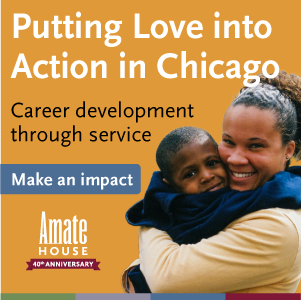I had a feeling that being a part of community would be second nature to me. I felt a strong sense of community from my dance group growing up. The influence of my instructors and peers shaped the person I am today. The word was central to student life when I attended Villanova University. After those four years, I walked away with lifelong friends. Naturally the idea of community, which is a tenet of most faith-based service programs, was a major draw to me when I considered volunteering with Assumption Mission Associates in Newcastle upon Tyne, England.
This idea of community came with a lot of expectations of my own, and from the other people who would be in my community. Creating community in a volunteer program is a very intentional experience. We live together, eat many meals together, volunteer in the same ministry together, and pray together. We have weekly meetings in which we plan simple every day tasks or talk about our experience and share our sentiments on a deeper level. Each of these aspects of community are simple enough to establish and at first arrival, we were just going through the motions. But my sense of community was challenged this year in ways that made me question my expectations and my assumptions of how communities function, what is important to them, and what it means to be an active member of a community.
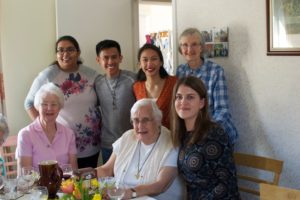
Easter lunch with the AV volunteers, the Assumption Sisters, and friends.
My year of service drew me into several communities – the Religious of the Assumption, my small group of fellow volunteers, Kids Kabin, and Walker (my neighborhood in Newcastle). A majority of my time was spent at Kids Kabin where I was reminded constantly that people become a part of community by giving them the chance to participate in ways they can contribute their best. This was apparent from the start when our manager, Will, asked us volunteers which responsibilities we wanted to take charge of this year instead of assigning them at random. When we were training or learning a new skill, we were taught by jumping right into the challenge without fear of making mistakes. That feeling of being hands-on and being able to form the way things get done at Kids Kabin, made us feel like we fit in with the rest of the staff right away.
This mentality was important to model to the kids, as well. When we were showing the kids how to do something, like hammering a nail or mix paint, we often had an urge to do it for them. But we had to resist and allow the kids to have a go themselves. If it wasn’t working one way, we encouraged them to figure it out a different way or guide them without taking control. When someone learned a skill, they continued to grow their community circle by showing a newer or younger member what they mastered. They started understanding that the basics of a community start with allowing people to participate in ways that utilize their strengths.
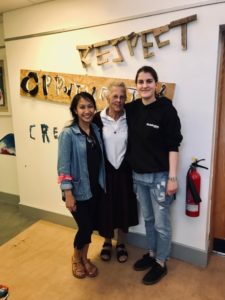
With Sr. Christine and fellow AV, Rugile, at the 25th Anniversary Celebration, standing in front of the values wall at Kids Kabin. The wall reads “Respect, Opportunity, Creativity” and was created by the young members of Kids Kabin.
I’m sure I was helpful and effective in my work in the earlier days of my program, but there is a transformation in the difference you make when your motivations are truly rooted in the community. In the beginning, I wanted to do well leading sessions basically to show that I could do a good job because that was what I was there for. Over time as I got to know the kids better, I wanted to have great sessions because I wanted them to make the most of their time at Kids Kabin. I saw how it gave them access to creative resources that they craved. I saw that the kind of art, friendships, and learning they built and received at Kids Kabin were helping them overcome struggles in their lives and build their confidence. They were given a new chance to succeed and I wanted to make sure they could see that.
A highlight of my year was the 25th anniversary celebration of Kids Kabin. The event was one week before my program ended. I had the pleasure of organizing the event, from planning the activities, coordinating staff and volunteers, and acquiring supplies. It was a big task and it was very rewarding to see it all come together. During the day when we were in full preparation mode, I remember stopping to turn around and take a good look at the Kids Kabin centre. A group of board members and staff were setting up grills outside, some kids from the neighborhood were helping move around chairs, volunteers were decorating the windows and exterior, and Sr. Christine was hard at work tidying up the garden. The scene perfectly captured the power and spirit of community. Everyone was willing to lend a helping hand and they did it with smiles and enthusiasm, not because they had to but because they wanted to. It has been a blessing to work alongside such passionate individuals all year long – they’ve reminded me what a lasting impact we can make in our neighborhoods when we center our hearts on the community.
Be sure to visit Our Stories next Thursday to see part two of this blog, Myra’s final post as a CVN Serving with Sisters Contributor!
 Myra Villas is a volunteer with Assumption Mission Associates (AMA) and a CVN Serving with Sisters Contributor. This blog series is sponsored by our VOCARE Initiative, thanks to the support of the Conrad N. Hilton Foundation.
Myra Villas is a volunteer with Assumption Mission Associates (AMA) and a CVN Serving with Sisters Contributor. This blog series is sponsored by our VOCARE Initiative, thanks to the support of the Conrad N. Hilton Foundation.

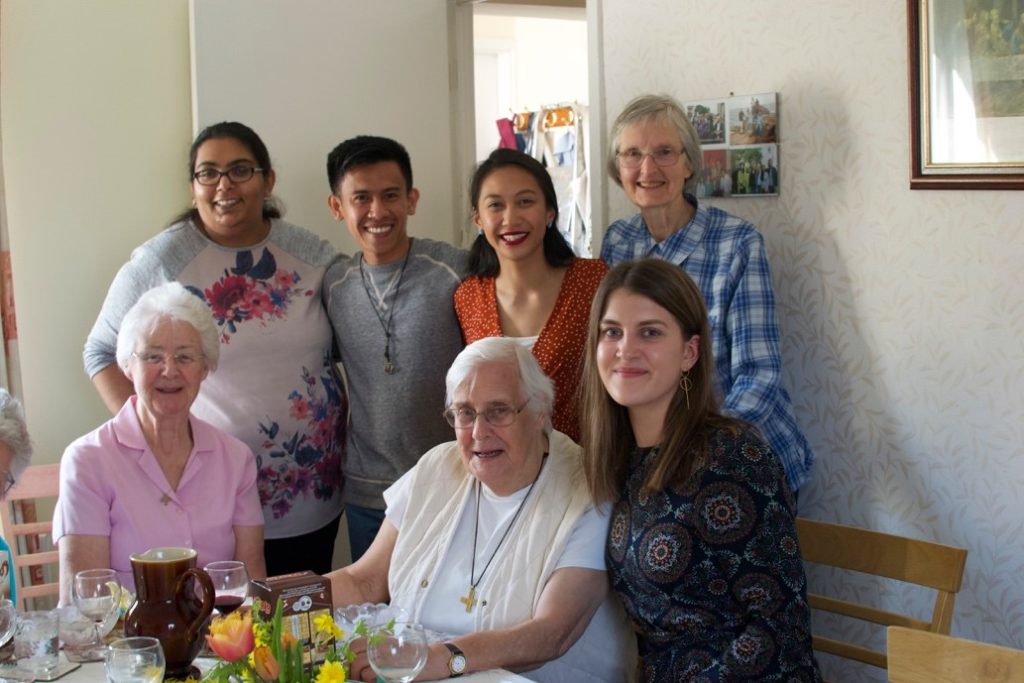

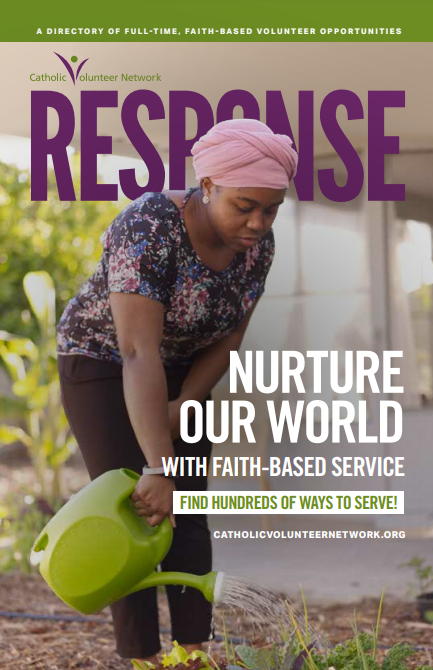 Thousands of faith-based service opportunities can be at your fingertips with the RESPONSE. Download the latest edition today!
Thousands of faith-based service opportunities can be at your fingertips with the RESPONSE. Download the latest edition today!
